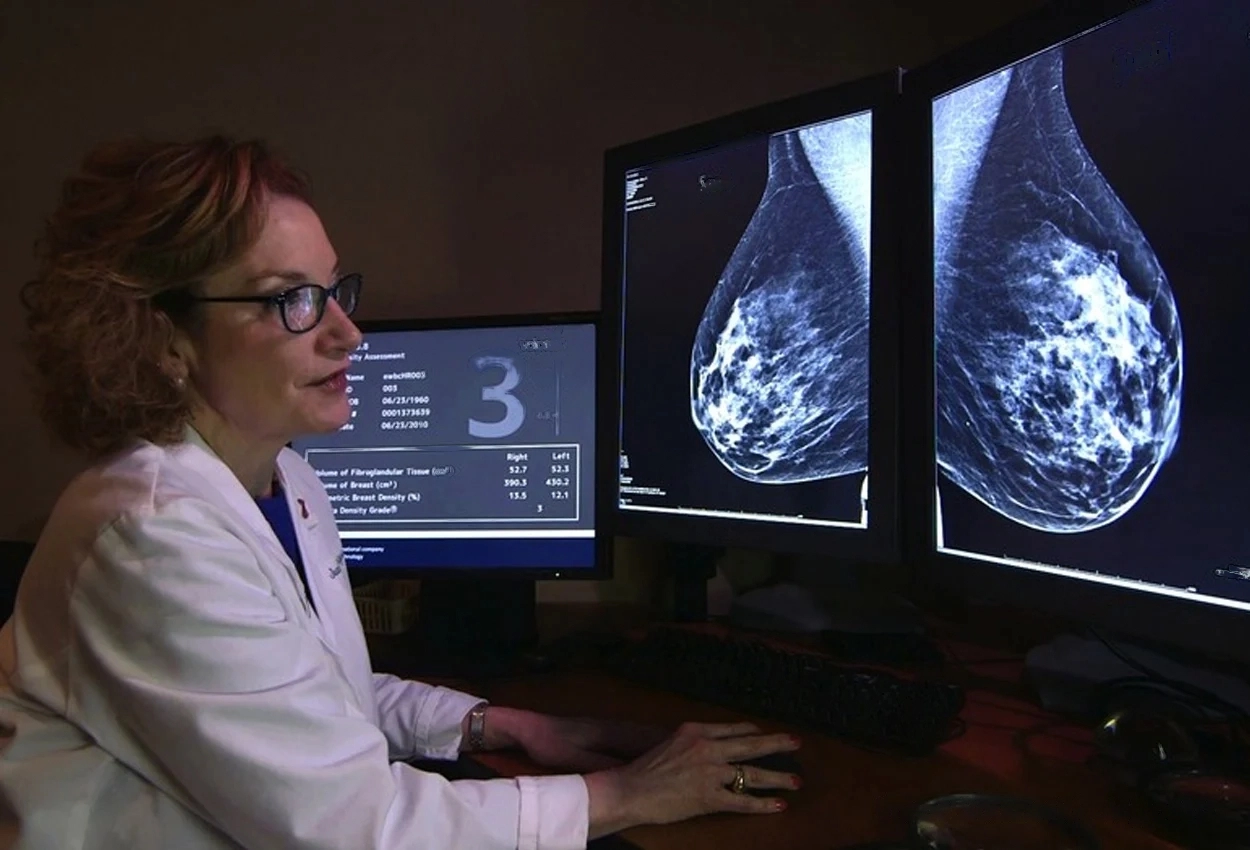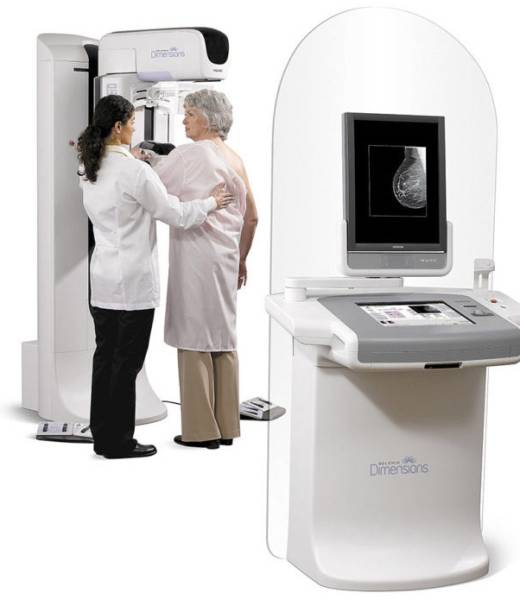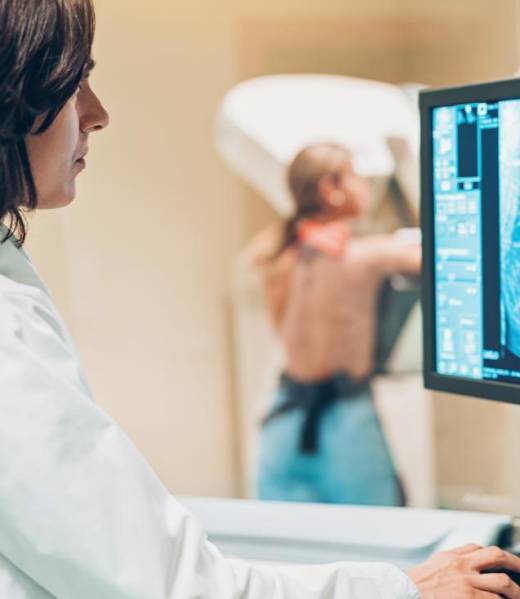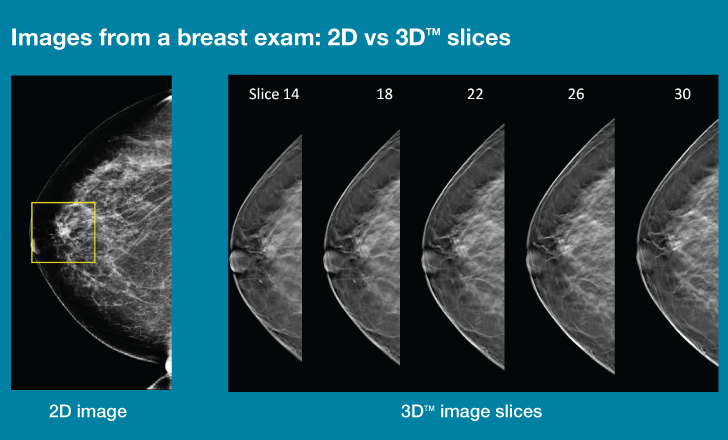


Similar to how a three-dimensional photograph offers more intricate details and realism compared to a two-dimensional image, digital breast tomosynthesis (DBT), also known as 3D mammography, provides radiologists with a sharper perspective of breast tissue. This advanced technology has quickly become indispensable in imaging, bolstering doctors’ capabilities in identifying early-stage breast cancer. Early detection of breast cancer translates to prompt treatment, potentially less invasive treatment choices, and improved prognoses.
With 3D mammography, radiologists can examine breast images in “slices,” enabling them to peer through layers of tissue more effectively, reducing the chances of overlooking early cancer indicators. Unlike 2D mammograms, this technology facilitates the detection of breast cancer obscured by overlapping fibroglandular tissue. Studies indicate that 3D mammography is up to 40 percent more effective in identifying invasive breast cancers.
Frequently asked questions
What are the benefits of 3D mammography?
The advantages of 3D mammography are numerous. Here are some key points to consider:
- Tomosynthesis, commonly known as 3D mammography, enhances cancer detection and is advantageous for all women, regardless of breast density.
- Research indicates a 43 percent improvement in cancer detection rates with 3D mammography compared to traditional 2D mammography.
- 3D mammograms result in fewer recalls for additional testing, reducing unnecessary anxiety for patients.
- Furthermore, 3D mammography identifies more benign lesions, including cysts, which may be overlooked in conventional mammograms. Monitoring these findings is crucial for comprehensive breast health management.


What are the benefits of 3D mammography?
Undergoing a 3D mammogram is a similar experience to a 2D one. Upon arrival at the breast center, you change into a gown and are escorted by a radiology technician to a private mammography room equipped with the 3D mammography machine, which closely resembles a conventional 2D mammography machine.
The technician assists you in positioning your body comfortably. Your breast is placed on a tray, and a flexible plastic plate gently compresses the breast tissue from above.
Using low-radiation dose X-rays, the mammography tube captures a series of images from various angles, all completed within a few seconds. This process is repeated for the other breast.
Subsequently, the radiologist interprets the images and provides a comprehensive report of the results to both you and your doctor.
How long does a 3D mammogram take?
The entire exam is quick (about 15 minutes). The good news for patients is it doesn’t take any more time to have her mammogram than usual. Each image only takes a few seconds.
Benefits of 3d mammograms over 2D mammograms
A 3D mammogram offers a more detailed and comprehensive view of breast tissue, enhancing the accuracy and timeliness of cancer detection by radiologists. With 3D mammography, medical professionals can examine breast tissue from multiple perspectives, improving their ability to identify masses accurately.
As a result of the increased clarity provided by 3D mammograms, there has been a notable decrease in false alarms and subsequent recall rates. This reduction in false positives is particularly beneficial in minimizing unnecessary patient anxiety and medical interventions.
Furthermore, 3D mammography excels in providing clear images of breast density, a factor strongly associated with breast cancer risk. Research indicates that women with dense breasts have a higher likelihood of developing breast cancer. Therefore, the superior accuracy of 3D mammograms compared to traditional 2D mammograms is evident, particularly in detecting abnormalities in dense breast tissue.

When should I have a mammogram?
Talk to your health care provider about when you should begin having screening mammograms. Average risk women (including women with dense breasts) should consider starting yearly screening mammography beginning at age 40.

